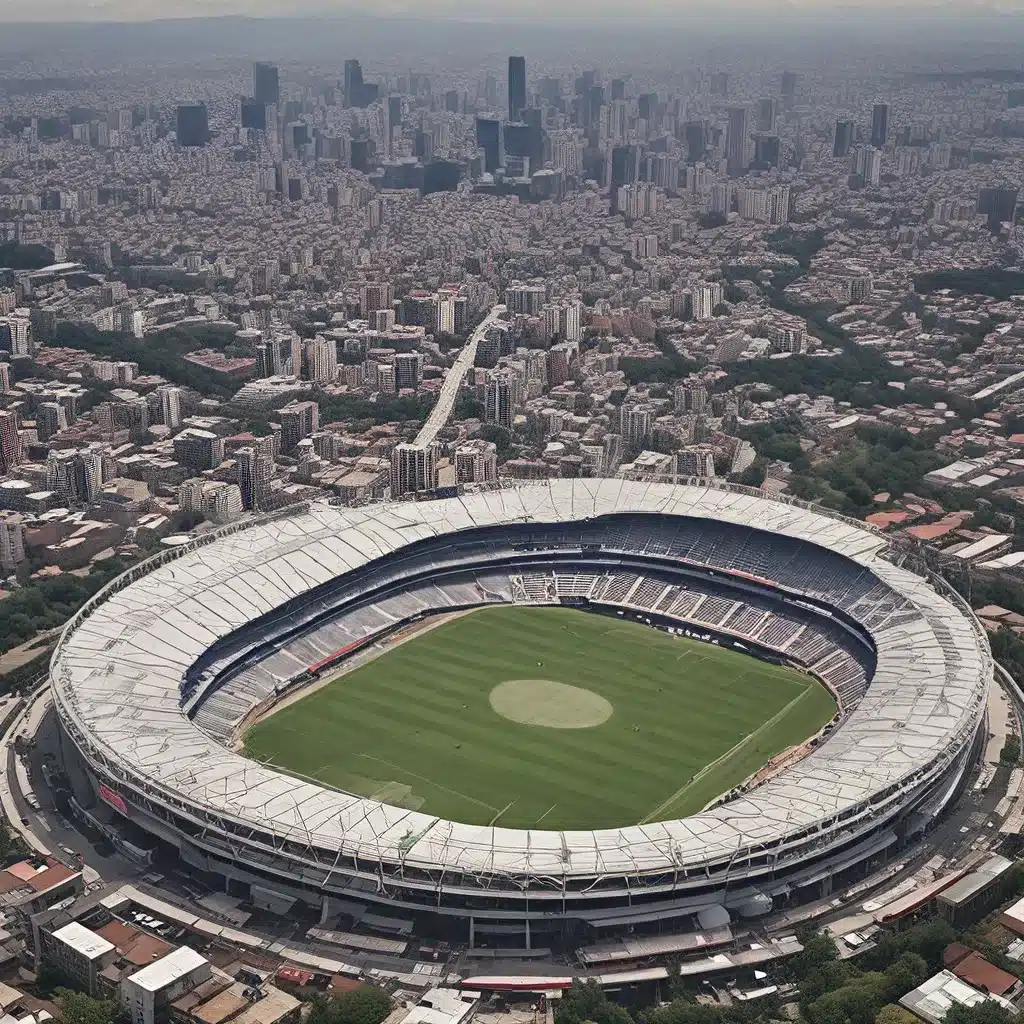
Towering over the bustling streets of Mexico City, the Estadio Azteca stands as a testament to the enduring passion and pride of Mexican football. This colossal arena, home to the legendary Club América and the Mexican national team, has witnessed some of the most iconic moments in the sport’s history, cementing its place as one of the most renowned stadiums in the world.
A Storied Past: The Evolution of Estadio Azteca
The Estadio Azteca’s origins can be traced back to the early 1960s, when Mexico City was selected to host the 1968 Summer Olympics. The city’s existing stadium, Estadio Nacional, was deemed too small to accommodate the anticipated crowds, and a new, larger venue was commissioned. The Estadio Olímpico Universitario, located on the campus of the National Autonomous University of Mexico (UNAM), was built as the primary Olympic stadium, but the need for an even larger and more modern facility led to the conception of the Estadio Azteca.
Designed by renowned Mexican architect Pedro Ramírez Vázquez, the Estadio Azteca was officially opened in 1966, just in time to host the 1970 FIFA World Cup. The stadium’s innovative architecture and impressive scale quickly captured the attention of the global football community, with its distinctive volcanic-inspired design and towering concrete structure becoming an iconic symbol of Mexico’s football heritage.
A Colossal Feat of Engineering
The Estadio Azteca is a true marvel of engineering, boasting a seating capacity of over 87,000 and covering an area of nearly 13 hectares. The stadium’s design is a testament to the ingenuity and vision of its creators, who sought to create a venue that would not only host the world’s premier football events but also serve as a cultural and architectural landmark.
One of the stadium’s most striking features is its unique elliptical shape, which was designed to maximize visibility and create an intimate atmosphere for spectators. The stadium’s steep, terraced stands rise up from the pitch, creating a sense of immersion and enhancing the excitement of the game-day experience.
The Estadio Azteca’s engineering feats extend beyond its sheer size and shape. The stadium’s structural integrity is underpinned by a complex network of reinforced concrete and steel, designed to withstand the rigors of both natural and man-made challenges. This robust construction has enabled the stadium to host a wide range of events, from football matches and concerts to political rallies and cultural celebrations, without compromising its structural integrity.
A Hallowed Ground for Football Legends
The Estadio Azteca’s significance extends far beyond its architectural and engineering prowess. This iconic stadium has played host to some of the most memorable moments in football history, cementing its status as a sacred ground for the sport.
The 1970 FIFA World Cup, hosted in Mexico, was a defining moment for the Estadio Azteca. The stadium’s grand debut saw it host the tournament’s iconic final, which pitted reigning champions England against the exhilarating Brazilian side led by the legendary Pelé. In a match that captured the world’s imagination, Brazil emerged victorious, securing their third World Cup title and solidifying their place in football’s pantheon.
The Estadio Azteca’s legacy continued to grow over the subsequent decades, hosting numerous other prestigious tournaments, including the 1986 FIFA World Cup, where the stadium witnessed one of the most controversial and iconic moments in the sport’s history – the “Hand of God” goal scored by Argentine legend Diego Maradona.
Beyond its international acclaim, the Estadio Azteca has also been the stage for countless domestic league matches, with Club América and the Mexican national team calling it their home. The stadium’s passionate supporters, known for their unwavering loyalty and electrifying atmosphere, have created an unparalleled match-day experience that has become a hallmark of the Estadio Azteca.
A Shrine to Mexican Football Culture
The Estadio Azteca is not merely a football stadium; it is a shrine to the rich cultural heritage and enduring passion of the Mexican people. The stadium’s design and architecture reflect the country’s deep-rooted connections to its pre-Hispanic past, with the volcanic-inspired motifs and striking silhouette evoking the grandeur of Mesoamerican architecture.
Beyond its physical attributes, the Estadio Azteca has become a symbol of Mexican national identity, serving as a canvas for the expression of the country’s pride, resilience, and love for the beautiful game. The stadium’s stands are adorned with vibrant banners, chants, and choreographed displays, creating an atmosphere that is both festive and fiercely competitive.
The Estadio Azteca’s impact extends far beyond the confines of the pitch, as it has become a hub for community engagement and cultural exchange. The stadium regularly hosts events and initiatives that celebrate the diversity and richness of Mexican culture, from music festivals and art exhibits to educational programs and social outreach efforts.
A Beacon for the Future
As the Estadio Azteca continues to evolve and adapt to the changing demands of the modern game, it remains a beacon of hope and inspiration for football fans and enthusiasts around the world. The stadium’s commitment to innovation and sustainability is evidenced by its ongoing efforts to modernize its facilities, improve accessibility, and reduce its environmental impact.
Stadium Journey has highlighted the Estadio Azteca as a must-visit destination for football aficionados, praising its unparalleled atmosphere, rich history, and commitment to the sport’s cultural heritage. The stadium’s ability to captivate and inspire audiences, both local and international, is a testament to its enduring significance in the world of football.
As the Estadio Azteca prepares to host yet another generation of football legends and enthusiasts, it stands as a symbol of the sport’s resilience, adaptability, and the power of human ingenuity. This colossal arena, a true marvel of engineering and a cherished cultural landmark, will undoubtedly continue to capture the hearts and minds of football fans for generations to come.

